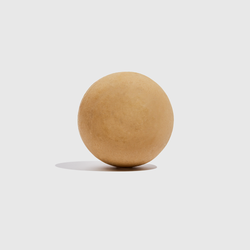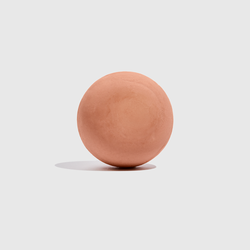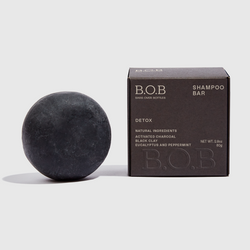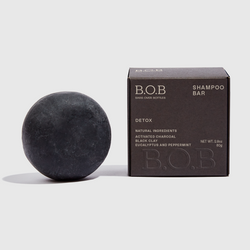13 Ingredients You Should Avoid in Shampoo (And Which To Look For!)
Index
-
What ingredients to avoid in shampoo: 13 big nos for your hair
-
Good shampoo ingredients to search for
-
Protect your health with clean beauty products
Want to know what ingredients to avoid in shampoo? You’ve come to the right place. As the creator of natural, waterless, and plastic-free clean beauty products, I can help you understand what ingredients to avoid in shampoo – and which ones to search for.
So let’s dive right in. When it comes to what ingredients to avoid in shampoo, here are the big ones!
What ingredients to avoid in shampoo: 13 big nos for your hair
Here are the ingredients to avoid in shampoo whenever possible:
1. Ammonium Lauryl Sulfate
No list of what ingredients to avoid in shampoo would be complete without mentioning sulfates.
What are sulfates? They are strong detergents that bind with water, and the natural oils on your scalp, to strip your hair of dirt and impurities. Unfortunately, they also strip your natural oils – which can leave your hair brittle, frizzy, and off balance.
One of the most common sulfates found in shampoo is Ammonium Lauryl Sulfate. If you see this term on a shampoo label, steer clear!
Sulfates like Ammonium Lauryl Sulfate are one of the main reasons people with curly and dry hair are scared to use shampoo in the first place. Luckily, there are no poo shampoo products out there that are sulfate-free and safe for even the driest strands.
2. Sodium Lauryl Sulfate (SLS)
Ammonium Lauryl Sulfate isn’t the only sulfate around. Sodium Lauryl Sulfate (also known as SLS) is also common in shampoos.
While SLS can cause a beautiful, velvety lather, don’t be fooled. What feels soft while washing will leave your hair and scalp irritated and dry, causing an endless cycle of over-washing and unhealthy strands.
As if that weren’t bad enough, sulfates like SLS can also completely strip color-treated hair. You’ve been warned!
To avoid potential issues, it’s really best to look for sulfate-free shampoo and conditioner. These use gentle surfactants to create a lather that WON’T strip your hair of color or natural oils.

3. Parabens
Parabens are a common (and harmful) additive in many shampoos. They are used to prolong the shelf life of hair products. But parabens can disrupt your natural hormone balance, cause irritation to your skin, and may even cause an increased growth of breast cancer cells.
All this has certainly earned parabens a place in my list of what ingredients to avoid in shampoo.
Try to look for shampoos labeled “paraben-free,” and avoid any products with butylparaben, ethylparaben, or methylparaben on the label.
4. Polyethylene glycol
Polyethylene glycol (PEG) is a thickening agent derived from petroleum. While PEGs themselves may not be toxic, many common byproducts in PEGs are harmful. They can also strip your hair of moisture and make your hair more prone to breakage.
5. Triclosan
Next on my list of what ingredients to avoid in shampoo is triclosan. Triclosan is an antibacterial agent used as a preservative. It has been banned from use in soaps, but can still be found in shampoo, deodorant, and toothpaste. Yikes!
Triclosan is a known endocrine disruptor, which can lead to immune system issues, weight fluctuation, mood swings, and even infertility and cancer.
6. Formaldehyde
Formaldehyde is a well-known carcinogen, and yet it is used as a preservative in many shampoos. When checking your shampoo label, look for the term “quaternium-15.” This is a sign you could be at risk.
7. Synthetic fragrances
The terms “fragrance” and “artificial fragrance” hide a number of sins – and a number of chemicals. There is absolutely no way of knowing what the manufacturer is hiding with those terms, and some chemicals used to create fragrances can have serious side effects.
Some fragrance chemicals may cause scalp irritations, hair loss, asthma, infertility, or cancer. That’s why synthetic fragrances have made my list of what ingredients to avoid in shampoo. It just isn’t worth the risk! Instead, look for shampoos with essential oils and natural fragrances.
8. Synthetic colors
Synthetic colors are another potential danger in hair products. These colors are derived from petroleum and coal-tar, which are known to cause a range of health problems. Make sure your shampoo label doesn’t contain the terms “FD&C” or “D&C” combined with a number.
9. Dimethicone
Dimethicone is a type of silicone used in shampoos to make your hair seem smooth and soft. Unfortunately it doesn’t do anything to moisturize your hair. In fact, silicones create product build-up that blocks moisture and stops nutrients from accessing your strands.
This build-up can leave your hair unhealthy and weighed down, and create irritation for your scalp, so silicones in general (and dimethicone in particular) are on my list of what ingredients to avoid in shampoo.
10. Retinyl palmitate
Combine retinol with palmitic acid and you get retinyl palmitate. It’s a wonder it’s still used in some shampoos, as it is known to cause itching, burning, skin peeling, reproductive issues, and has even been linked to cancer.
11. Sodium chloride
Next on my list of what ingredients to avoid in shampoo is sodium chloride. Yes, I’m talking about salt. Some companies use salt to make their hair products thicker, but unfortunately it can make your scalp dry and itchy, and may even lead to hair loss.
12. Diethanolamine (DEA)
Diethanolamine, also known as DEA, has earned the next spot on my list of what ingredients to avoid in shampoo. DEA is an emulsifier found in some shampoos that has been linked to cancer and brain development issues in animals.
While the effects on humans still need more study, The European Commission has already banned DEA in cosmetics – so you should pay attention.
13. Drying alcohols
Most alcohols can really dry out your hair, especially if they appear high up on the ingredient label of your shampoo. Any alcohols with “prop” in the name, like Isopropyl alcohol or propanol, are especially bad, and should be added to the list of what ingredients to avoid in shampoo.
Now that you know what ingredients to avoid in shampoo, let’s discuss some GOOD shampoo ingredients for your scalp and hair.
Good shampoo ingredients to search for
Here are some good shampoo ingredients to look for when choosing your next hair product:
Sodium Cocoyl Isethionate
While the name may sound like a scary chemical, Sodium Cocoyl Isethionate is actually a helpful - non-sulfate - surfactant made from coconut oil. It can create a luxurious lather, but won’t strip your hair of natural oils.
Fatty alcohols
While many alcohols are drying, fatty alcohols aren’t. In fact, when used in hair products, they can make for a very moisturizing shampoo! Some fatty alcohols include benzyl, lauryl, stearyl, and oleyl alcohols.
Shikakai
Shikakai oil is a curly girl’s best friend. That’s because shikakai is a natural curl memorizer! That’s why I recommend shikakai shampoo to anyone with curly or wavy hair. Shikakai can also help make hair smoother, less tangled, and less prone to breakage.
Activated charcoal
If you’re itching to reach for a clarifying shampoo, what you really want is a DETOX. Using activated charcoal, a detox shampoo can help you achieve that deep-clean you’re looking for without upsetting the natural balance of your scalp and hair.
Clay
If you have naturally oily strands, you might want to look for a shampoo with clay in it. A purifying shampoo with clay can help remove product residue and impurities while improving the health of your scalp.
Phyto-keratin
The best shampoo for damaged hair contains phyto-keratin, a plant-based keratin which helps to strengthen your strands from the inside out. If you have issues with split ends or breakage, phyto-keratin can help to smooth your hair cuticles and heal existing damage.
Copoasu butter
The best shampoo for dry hair contains truly nourishing ingredients like copoasu butter. Copoasu butter deeply moisturizes your strands without making them greasy, and helps to control hair volume and frizz.
Essential oils
Last but certainly not least, look for shampoos that use essential oils instead of synthetic fragrances. Not only can essential oils make your shampoo smell divine, a lot of oils have medicinal properties as well.
For example, rosemary and peppermint oils can improve hair growth, and lemongrass essential oil may fight dandruff and other scalp issues thanks to its antimicrobial properties.
Protect your health with clean beauty products
If the list of ingredients to avoid in shampoo is any indication, there are a lot of harmful chemicals in hair products out there. If you want to ensure your shampoo is safe, it’s best to look for natural, clean beauty products.
My line of natural shampoo bars is silicone-free, paraben-free, sulfate-free, and 100% plastic-free, too! This makes my shampoo bars healthy for you AND the environments, so you can feel completely assured about your hair routine.








































